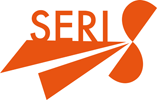The natural environment is under substantial stress from human activity. Rapid population and economic growth since the dawn of the industrial revolution has been coupled with issues of increasing greenhouse gas emissions (the leading cause of climate change), air and water pollution, ecosystem disruption and biodiversity loss – to name but a few. Continued degradation of the natural environment in such a way is likely, in turn, to have severe and long-lasting implications for human welfare. It is imperative that we, from individuals in civil society to policy makers in government, act to avoid such consequences by reducing humanity’s impact on the environment. Indeed, by doing so we may unlock new wells of opportunity for prosperity that would otherwise go untapped.
For the last three years, researchers on the POLFREE project (Policy Options for a Resource-Efficient Economy) have intensively sought to provide solutions to this problem. First, by investigating the ‘web of constraints’ behind why we do not use natural resources as efficiently as we might. This laid the foundations for the next stage – what does a resource-efficient economy look like, and how may we get there? What are the consequences for society if we achieve this state, and those if we don’t? The answers to such questions are essential in stimulating the change required. The POLFREE scenarios provide a very rich picture on how 39 countries/regions and 35 economic sectors in each country would develop in their relation with environmental media if different policies would be implemented in Europe and across the world.
The researchers involved in POLFREE worked on the project for three years. A “Business-as-Usual” shows that a lack of effective environmental policies bear significant economic risks. Climate change is getting out of control, food prices soar and the economy continues to slow down, in turn leading to rising unemployment.
Looking for solutions
Thus the question arises: What could a better, more sustainable future look like and how may we get there? The POLFREE researchers developed four concrete sustainability targets for 2050, affecting resource, water and land consumption as well as the emission of CO2. Using the computer model GINFORS three pathways to reach these goals were developed.
GINFORS can help to understand the effects of about 30 different socio-economic control elements such as taxes or subsidies. This includes direct and indirect consequences and even unwanted ones (boomerang effect). Thus, the model helps to develop fitting policy mixes for the POLFREE scenarios.
A summary of the most important results can be found at http://polfree.seri.at
Additionally, the project offers a comprehensive database of the economic, social and environmental developments of both the past 15 and coming 30 years, the latter even in four varieties (Business-as-Usual, and the three POLFREE scenarios Global Cooperation, EU Goes Ahead and Civil Society Leads).
What we offer
- Presenting and discussing the results of POLFREE as part of a workshop with stakeholders, focusing on specific issues (certain countries like Brazil, specified industries such as forestry or feed production, particular environmental impacts such as land cover changes due to certain crops)
- Developing the results of POLFREE concerning specific issues further (certain countries not yet detailed in GINFORS such as Indonesia, more detailed economic sectors, or particular environmental impacts not yet included in the model)
- Doing this in a SERI-specific, integrated way including analog (print) and digital (website or e-book) media and the combination of text, pictures and videos tailored towards the content
Contact
Fritz Hinterberger
fritz.hinterberger[at]seri.at

